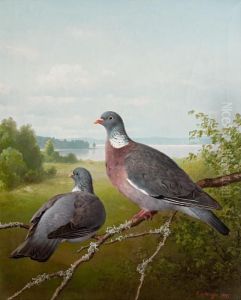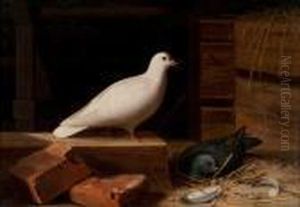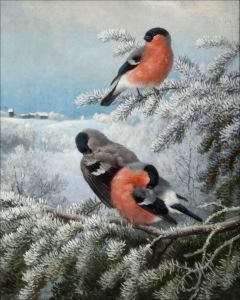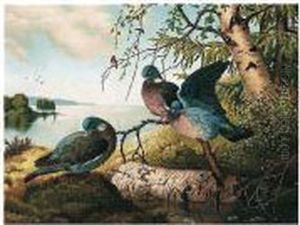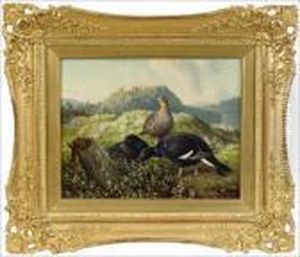Ferdinand Wilhelm Von Wright Paintings
Ferdinand Wilhelm Von Wright was a Finnish painter born on March 19, 1822, in Haminalahti, Finland. He was the younger brother of painters Magnus Von Wright and Wilhelm Von Wright, and together, the trio is often recognized for their significant contributions to Finnish art, particularly in the depiction of birds and natural landscapes.
Ferdinand developed an early interest in nature and art, influenced by his family's artistic background. He began his artistic studies with his brother Magnus in Helsinki and later continued his education in Sweden. Unlike his brothers, Ferdinand specialized in painting birds and gained a reputation for his meticulous and lifelike representations.
Throughout his career, Ferdinand combined his passion for ornithology with his artistic talent. He traveled extensively in Finland and Sweden, studying and painting the native bird species. His paintings are characterized by their scientific accuracy and artistic quality, often featuring birds in their natural habitats with great attention to detail and a harmonious use of color.
Von Wright's contributions to Finnish art were not limited to his paintings. He also worked on several illustrated books on Nordic fauna, which have been of great importance to the study of ornithology in Finland. His most notable work is 'Svenska Fåglar' (Swedish Birds), which he illustrated alongside his brothers.
Ferdinand Wilhelm Von Wright's legacy in the realm of art and ornithology is significant. His works are held in high regard and can be found in major Finnish museums, including the Ateneum Art Museum in Helsinki. His paintings have also been featured on Finnish postage stamps, celebrating his contribution to the national heritage. He passed away on November 17, 1906, in Finland, leaving behind a body of work that continues to inspire and inform.




